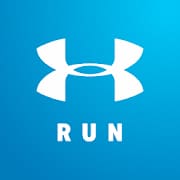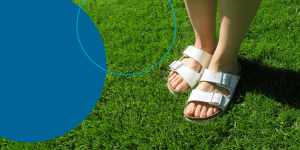Start off on the right foot

Whether you are a newbie or a trained marathon runner, Foot and Ankle Surgical Associates wants you to be prepared and protected for every run. After sitting down with a few of our seasoned doctors, we have gathered some of the best tips to avoid and prevent injuries and maximize your running efforts.
Our first recommendation is to make a quick visit to your primary care physician. This is something you should already be doing, but just in case, let us make sure your heart is healthy and you are ready to hit the road running with your doctor’s approval. Once you have been given a thumbs up on heart health, let us make sure you have the proper equipment to ensure the ultimate foot care. We’ve outlined some suggestions to get you started below.
Schedule a foot evaluation and get measured
Wearing the wrong size shoe can have a detrimental effect on pain while you are running.
Visit your local Foot and Ankle Surgical clinic and have one of our doctors evaluate your feet and give you recommendations for what kind of shoe or shoe insert will work best for your feet.
These evaluations are completed with your overall foot health in mind. Our goal is to keep you running pain-free while you are enjoying the beautiful Pacific Northwest scenery. At Foot and Ankle Surgical Associates, we also provide essential stability and support with our line of Vionic shoes. With a contour seamlessly engineered into each shoe, sandal, and slipper, Vionic helps support natural alignment from the ground up. Our staff is ready to help you find the perfect fit of Vionic shoes which are more affordable, stylish, and accessible to people in need of pain relief!
First we water. Then we add water. Finally top off with some water.
Stay Hydrated. As soon as you start to run, you start to dehydrate no matter what time of year it is. Here are some tips on the best ways to stay hydrated for all your upcoming runs.
Pre-Hydrate: Drink plenty of water one to two hours before your run. It is recommended to drink eight to 16 ounces of water ahead of your planned run.
Drink on the run: Your body will need fluids every 15-20 minutes during your run. The best advice would be to carry it with you or make sure it is available along the way. You can do this by setting a timer on your watch or phone to prompt you to drink on the run.
Post-run Hydration: Do not forget to rehydrate with water or a sports drink after your run.
Signs of Dehydration Include:
- Thirst
- Dry Mouth
- Feeling tired and sluggish
- Headaches
- Cramps
- Nausea
Your body is telling you all that you need to know. Tune in.
It is important to listen to your body. Running is a process and you will enjoy it more by allowing yourself to go on a journey and take the steps necessary to keep healthy along the way. Another way you can prevent injuries from happening is by stretching before going out on your run. Our doctors recommend partaking in an active warm-up, that could include a light jog and some stretching particularly for the calves and lower legs.
Some of these stretches include:
- Heel drop stretches for your hamstrings
- Quad stretches
- Lunges
- Knee hug
- Child’s Pose
- Hip Flexor
- Toe Touch
- Wall push
- Downward Dog
Get your whole body involved

It is important for anyone that is running a lot to also include some strength training into your running routine. Running involves not only your feet and legs but also the rest of your body. Getting in and doing some strength training will be key to your overall health and decreasing your chance of injury.
Aches and pains are common (and totally normal) after a hard run pounding the pavement. Our main goal at Foot and Ankle Surgical Associates is to make sure you are feeling normal soreness and discomfort, and not something serious for us to worry about. If you are experiencing pain that lasts more than a couple of days, it is likely a sign that you should see a doctor so that you can avoid further damage to your body.
A couple of things to pay attention to when experiencing pain are:
- If you are unable to walk, or unable to bear weight on your foot come in right away.
- If you are having pain that is lasting more than two to three days, call to make an appointment as soon as possible.
- Stress Fracture
- Tendonitis
- Calf Strains
- Torn Tendons
- Broken bones
Do not let common running issues slow you down. Let us help you stay prepared and protected so that you can stay running pain-free. Do not let foot pain derail your run… Check out some additional tips and tricks provided by our doctors to help resolve those running injuries in our handy dandy FAQ section below.
Shanna's story: "Why I Run"
Frequently Asked Running Questions
The most common new runner injury is shin splints. We get so pumped up about our new passion for running that we do too much, too soon, too fast and our body needs time to adapt. Shin Splints come from a tendon imbalance and/or tightness in muscles. It is important to come in and get evaluated to see if we can help you with your stretching regimen or even orthotics for your shoes to help put your foot in a better position and relieve stress on your foot.
Symptoms:
- Ache or sharp pain along the front or inner side of the lower leg
- Could have some swelling in the lower leg
You do not need to be a marathon runner to have this problem. Regular runners experience toenail issues, and it comes down to shoes that do not fit properly. Your toenail(s) can turn a dark color, which is caused by bleeding taking place under the toenail that cannot escape. Although usually painless, your entire nail may fall off or eventually grow out. Some cases may require you to contact your local Foot and Ankle Surgical office for treatment, such as removing the nail or part of the nail under local anesthetic. What causes runners toe? This issue is caused by your toe(s) slamming up against either the end or top of your shoes.
Things you can do to prevent runner’s toe:
- Lace your shoes tighter
- Trim your toenails appropriately
- Apply tape to your nails for the run
- Wear thicker or moisture-wicking socks to keep your feet dry
When pain develops due to the pressure of the nail pressing down, it is time to give our office a call.
Vionic shoes provide essential stability and addictive support. With a contour seamlessly engineered into each shoe, sandal and slipper, Vionic helps support natural alignment from the ground up.
While many brands offer comfort, only Vionic sandals and shoes are podiatrist-designed with Orthaheel Technology, approved by the American Podiatric Medical Association (APMA), designed to restore natural foot function yet be more affordable, stylish, and accessible to people in need of pain relief!
Orthotics are devices inserted into a shoe, ranging from felt pads to custom-made shoe inserts, that correct an abnormal or irregular walking pattern. Sometimes called arch supports, orthotics allow people to stand, walk, and run more efficiently and comfortably. While over-the-counter orthotics (made for an average foot) are available and may help people with mild symptoms, they normally cannot correct the wide range of symptoms that prescription orthotics can because they are not custom made to fit an individual’s unique foot structure. Think prescription eyeglasses versus generic readers. Orthotic devices come in many shapes, sizes, and materials and fall into three main categories:
- Those designed to change foot function
- Those that are primarily protective in nature
- Generic over-the-counter orthotics
This is a common running injury and caused pain right behind and around the knee cap. It’s also known as patellofemoral pain syndrome, or “runners’ knee”. This injury is usually due to movements that load the knee joint in a flexed position. Runner’s Knee injuries can occur anytime you add impact to a bent knee as you leap forward.
Solution: Strength exercises
Completing some strength exercises that target the right muscles to keep your knee and hip in proper alignment is going to be crucial to your alleviating your knee pain. If you see any swelling at the knee joint, give us a call so our doctors can check you out and get you on the road to recovery and healthy knees!
A few of our favorite runnings apps

Runkeeper
One of the first running apps to come to market, Runkeeper offers all of the stats you would expect in a running app like pace, distance, time and calories burned. It’s simple interface is makes it easy for those newer to running to get started without becoming overwhelmed with data.

Run with Map my Run
With all of the basic functionality of the majority of running apps, Run with Map My Run as has the ability to connect to fitness trackers and heart rate monitors. It also adds some additional data points like monitoring food consumption and even the distance traveled in your running shoes so it can alert you when it’s time for a new pair!

Strava: Run, Ride, Swim
If you’re a person that runs, cycles and/or swims, Strava is a great choice. Mixing data tracking with a social media aspect creates an app that is engaging and allows you to continue to challenge yourself (and others). Take advantage of features like leader boards, achievement badges and a user generated database of routes.

Volt: Gym & Home Workout Plans
A premium app with a free 14-day trial, Volt is labeled as “an intelligent fitness training” app. Volt uses Artificial Intelligence to help create an evolving work-out plan that promises to “never get stale”.




